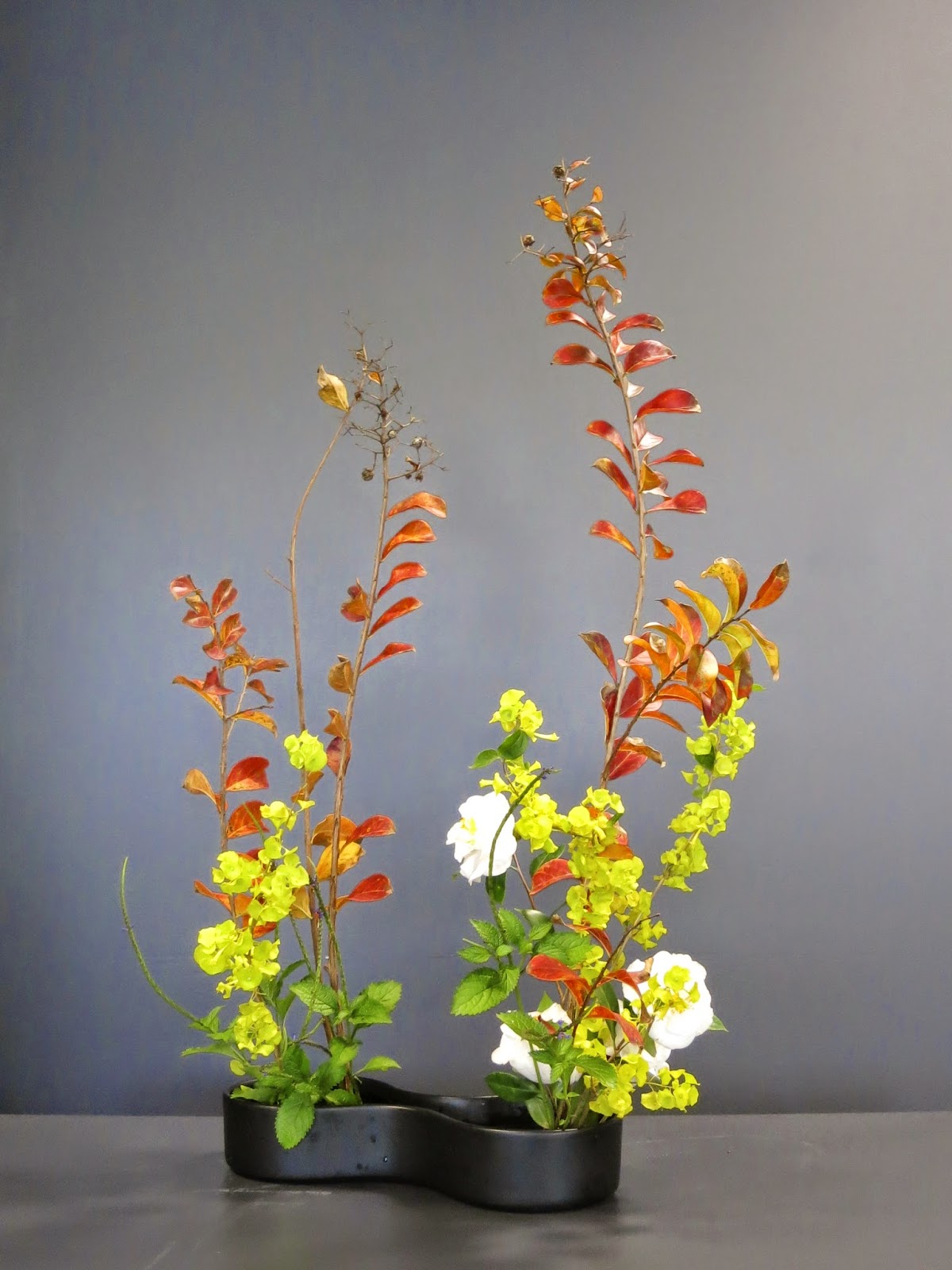I was recently invited to give two days of workshops for the Queensland Branch of the Sogetsu Teachers' Association. The workshops were in Brisbane which is the capital city, where the climate is subtropical and therefore warmer at this time of year than the south coast of Victoria. The first workshop was on the theme 'Ka-bu-wa-ke', an arrangement using two or more kenzans in a shallow, suiban, vessel. Below is a photo of my demonstration for the exercise. Emphasising the space between the groups is the most important aspect of the exercise and the materials of one group needs to be stronger than the other(s).
Illustrations of the exercise are usually done with only two kenzans, so I have deliberately used three kenzans which is clearer in the next photo. Although it is not apparent, because of the camera angle, I have used a large oval suiban that extends away from the camera.
Below is a selection of the arrangements by the attendees of the workshop
The second exercise was 'Mass and Line'. In this exercise either the mass or the lines need to dominate, so that the asymmetry of the arrangement is maintained. I used some ornamental peach branches for the lines and made them the main subject of the arrangement, to which I added some camellia leaves as a small contrasting mass. The forward movement of the lines is not apparent in the photo below.
The participants concentrating on mass and line...
…and a selection of the finished work.
Below the participants at the end of the first day.
I will post more photos next week of the second day of the workshops.
Greetings from Christopher
28th June 2014
You can see Emily Karanikolopoulos' latest blog posting by clicking on the blue text: Emily in Tokyo.























